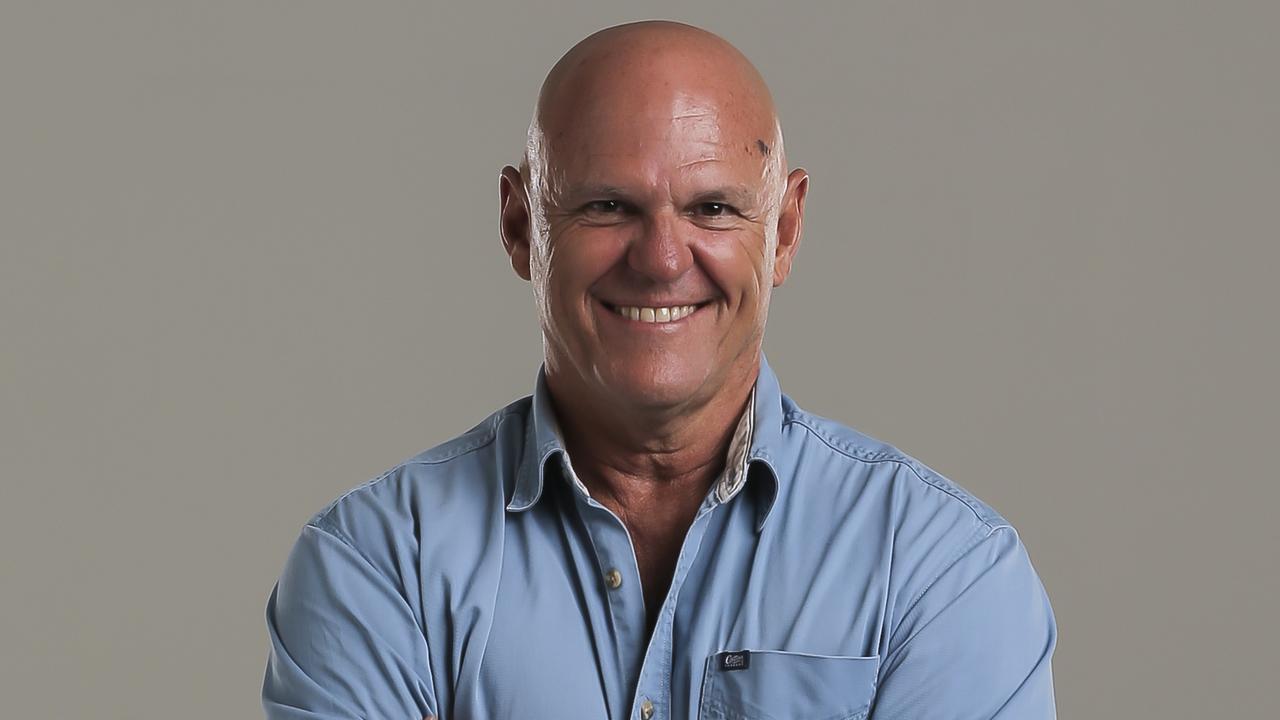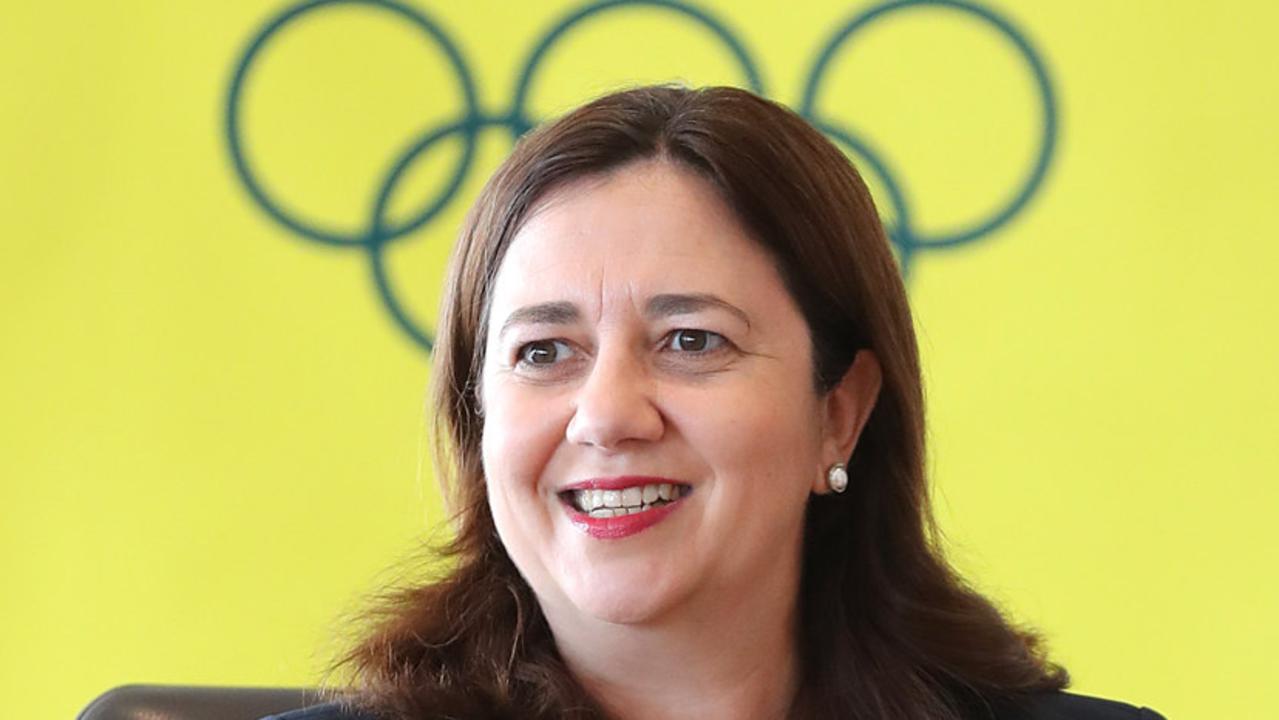Spotlighting the best and worst of Brisbane’s architecture during the Asia Pacific Architecture Forum
AS THE Asia Pacific Architecture Forum opens in Brisbane, we take a warts-and-all look at the designs of the host city.
Opinion
Don't miss out on the headlines from Opinion. Followed categories will be added to My News.
IT HAS probably been a point of debate in Brisbane since surveyor-general John Oxley first pitched a tent in the bush of the future city’s inner west in 1824, looking for water to service a penal settlement.
The argument would have flared again a year later when the first commandant of Moreton Bay, Lieutenant Henry Miller, decided to establish the colony on the peninsula that the Brisbane CBD now sits upon.
Then again when the old convict windmill on Wickham St went up in 1828, followed by the Commissariat Store on Queen’s Wharf Rd the following year.
And it remains an issue today. What to make of Brisbane’s architecture? What is bad and what is good? What is a blight on our cityscape, and what reflects and contributes to our unique environment?
Today, the 2018 Asia Pacific Architecture Forum opens in Brisbane. For 13 days leading architects from Australia and across Asia will discuss and debate our public spaces, now, and heading into the 21st Century.
The forum mission states in part: “The Asia Pacific is experiencing unprecedented urban growth. Architects, designers and planners have a critical role in shaping the future of the region, responding to the diversity of its people and countries.”
So what of the forum host itself? Brisbane, Queensland, Australia.

The evolution of this city has, and rightly so, indulged in regular reassessment of the buildings and structures that emerge over time and constitute the “city”. What decisions – right or wrong – have been made in the past? And what path should be taken into proceeding decades?
In 1911, columnist “Young Yorick” wrote in the Brisbane Truth: “In our new and struggling community, one does not expect to find the grandeur and stateliness of ancient Greece and Rome.”
Yet he had a loathing for the wooden Queenslanders that were springing up across the city.
“It is not in the nature of wood that it should be capable of introducing nobility into structures … yet the bad taste of builders, architects and owners have ruined the appearance of every street in and around Brisbane.”
By 1930, critics were hailing Brisbane one of the most beautiful cities in Australia.
But as recently as 2014, world-renowned philosopher Alain de Botton, in town for a series of lectures, described Brisbane as suffering from “chaotic ugliness” and added that “no one on the planet responds deeply to the brutal cross city expressway and chunky stained brown office blocks of the city”. (He retracted his complaint two years later, and said he was considering settling in Brisbane. “Seriously,” he reportedly said.)
Award-winning Brisbane architect and historian Don Watson – whose exhibition, Don Watson: A Civil Servant, forms a part of the forum – says despite some questionable planning decisions in modern Brisbane, the city still has some architectural gems.
“There’s not too much evidence of good planning decisions or decisions that will lead to a memorable city down the track,” he says. “The landscape here when the first settlement was made was described as paradise … and the topography was interesting but the views of it have all been blocked now. You mostly won’t have any awareness of what the topography’s like soon.

“But in the CBD there are a range of good buildings, including the Wickham Terrace car park. For its time, it was terrific.
“The Executive Building was a very good building.
“And the Cultural Centre (at Southbank), I think we did very well there.
“I mean the City Hall, you’ve got to be quite glad we’ve got something as ambitious as that. I’m sorry the spaces around it don’t match its ambition.”
And to those examples of buildings to be proud of could be added the Gallery of Modern Art with its fine and beautiful roof and QPAC the stepped outline of which has become stamped on Brisbane’s riverside visage, and the glorious, heritage-listed, arts and craft-style Old Museum at Bowen Hills.
But what, then, might some of the world’s leading architects make of this subjective list?

AMONG THE WORST
1 Brisbane Transit Centre, Roma St
This building would make even de Botton reconsider the true definition of ugliness. This train, bus and coach transport hub is a black, blocky conglomeration of office towers and hotel accommodation that has blotted Roma Street since its opening in 1986, just prior to the demise of Premier Joh Bjelke-Petersen’s regime. The building’s champion was former corrupt Bjelke-Petersen government minister Don “Shady” Lane, who played a huge part in securing its development. Politician Denver Beanland in 1988 described it in parliament as “a black blot … on the landscape of this city”. It is regularly cited as Brisbane’s worst building.

2 Queensland Police Headquarters, Roma St
Just across the road from the Transit Centre horror is its brutalist twin, the Queensland Police Headquarters. This block-like, bunker-style building was initiated by the corrupt former police commissioner Terry Lewis and completed after he was punted from the force in 1990. It is everything a police headquarters (and a building) shouldn’t be – uninspiring, intimidating and concerned with its own strength and power.

3 Woolloongabba Telephone Exchange, or Telstra Tower, Main St, Woolloongabba
This suggests something out of George Orwell’s novel 1984 in its unrelenting bleakness. The 15-storey edifice was completed in 1974 and looms like a featureless concrete finger not far from the famous Gabba sportsground and the area’s increasingly hipster cafe and restaurant precinct. The building was superficially spruced up in 2013.

4 UBET (formerly TAB) building, Sandgate Rd, Albion
This 10-storey brick of a building was actually awarded the 25 Year Award for Enduring Architecture by the Australian Institute of Architects in 2007, the jury citing it as having “weathered generations of reaction to, and subsequent re-embracing of, the principles of functional modernism”, and described as “a solitary … forward scout for modern urban architecture”. An application to have the building heritage-listed in 2015 failed. Like the Telstra Tower, it sits stranded, an uninspiring echo from another era, in the suburb of Albion that is transforming rapidly into a vibrant and desirable inner-city locale now replete with funky apartment buildings. The heritage application described it as “a fine surviving example of late twentieth century brutalist architecture”. And, again, there is a link to the corrupt regime of Bjelke-Petersen. The building was for years the office of Bjelke-Petersen’s top crony, Sir Edward “Top Level Ted” Lyons, who was once head of the TAB.

5 Infinity and Soleil Towers, North Quay and Adelaide St, Brisbane CBD
From a distance they bracket Brisbane city, these two narrow, monolithic towers of serviced and residential apartments. Infinity (81 storeys, pictured) and Soleil (74 storeys), are in the Meriton stable, rise out of small sites and, despite their height, share two common characteristics – they are so ubiquitous they almost render themselves invisible. And they would be right at home in any mid-range city in the United States and elsewhere. Anywhere.

AMONG THE BEST
6 One One One Eagle St, Brisbane CBD
This splendid, riverside, 54-storey skyscraper was designed by Cox Rayner and is a magnificent example of a building working with and complementing its environment. Award a 6-star green star rating, the building is state-of-the-art and its design was reportedly inspired by the “algorithm of the way plants grow towards the light”. The outside of the building features 54,000 LED lights that rise skyward like the branches of Moreton Bay fig trees, a cluster of which stand nearby at the intersection of Eagle, Elizabeth and Creek St. One One One is Brisbane, through and through.

7 Customs House, Queen St, Brisbane CBD
Just up the road from One One One hunkers the old Customs House building, perennially dwarfed by a growing Brisbane metropolis. It was completed in 1889
and designed in the Renaissance mode by Charles McLay of the Queensland Colonial Architect’s Office. With its copper dome and two-storey colonnade, it remained for decades
one of the city’s most beautiful and impressive buildings, and was once the primary marker of the city’s northern reach. Situated
on a bend of the Brisbane River, its street and riverfronts still work in harmony with its environment, despite the encroachment of modern structures.

8 Brisbane City Hall, Brisbane CBD
How could you go past the city’s iconic City Hall? Designed by Hall and Prentice and constructed of entirely local material, it was described upon its official opening as “an inspiration for citizenship” and an “edifice which for grandeur, dignity and architectural effect was without its peer in the Commonwealth”. The clock tower rises 90m above street level and the sounding of its Westminster chimes is virtually in the DNA of all Brisbanites. Built in the Classical Revival style and completed in 1930, on the eve of the Great Depression, it features a magnificent auditorium and a plethora of other noteworthy spaces. It is the city’s Grand Dame.

9 Ecosciences Precinct, Boggo Rd, Dutton Park
For more than a century those two words – Boggo Road – were synonymous with Brisbane’s notorious jail, along with its accompanying horror stories of murder and mayhem, of hangings and solitary confinement. How far the city has come when the Boggo Road Urban Village today houses the world class Ecoscience Precinct, a leading research facility that just happens to be housed in one of the city’s more extraordinary buildings. Designed by Hassell Architects, the award-winning structure is the workspace of more than 1000 scientists and is riven with shared spaces, external walkways, courtyards and a “solar control system” to manage the often harsh Queensland climate. It is everything the old Boggo Road Gaol – a short walk away – wasn’t. Welcome to a thoroughly modern Queensland.

10 Craigston, Wickham Tce, Spring Hill
Craigston, at eight storeys, was Brisbane’s first multi-level apartment building and designed by Atkinson and Conrad architects in the Spanish Mission style. The idea for the building came from a Dr Sydney McDonald, who conceived of medical suites on the lower floors and residential apartments above. It was built in 1927 and still commands attention in the city’s traditional medical precinct. With its arched entranceway and turrets, its style and grace continue to outstrip its contemporary neighbours.

The 2018 Asia Pacific Architecture Forum features lectures, exhibitions, tours and even workshops for children. Visit the website



